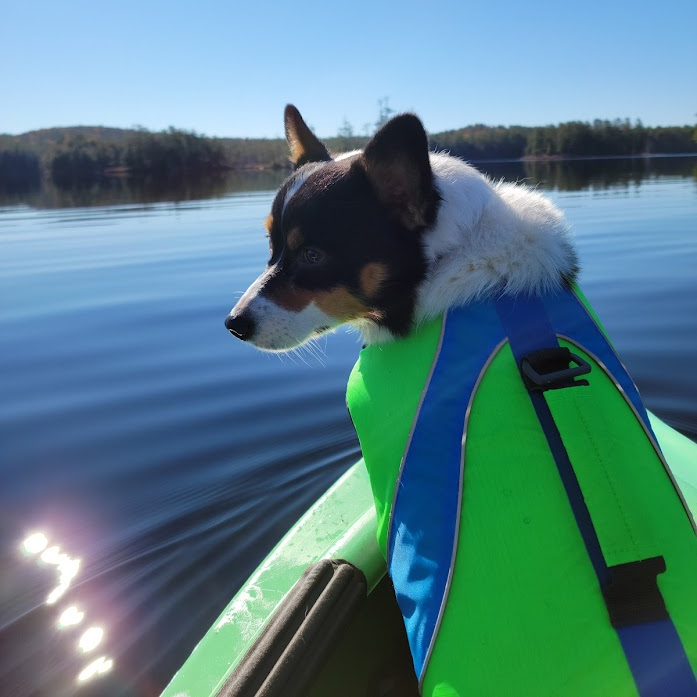

During the summer months, hot weather and humidity can make us all feel gross. But when it comes to keeping our pets safe in the summer, we need to know the difference between uncomfortable and dangerous. How do you cool a dog down when it’s sunny, muggy and there’s no sign of it slowing down? How do you keep your cat cool?
>> Pet Safety 101: Keep Your Animals Safe at Home
Some pet owners feel bad about leaving their pets cooped up indoors on hot, sunny days, but too much outside time during hot weather can lead to trouble. Check out these tips on how to help your pets weather the warmer weather.
How Can I Keep My Pet Safe and Comfortable in the Heat?
“It’s important to remember that it’s not just the ambient temperature, but also the humidity that can affect your pet,” says Dr. Barry Kellogg, VMD, of the Humane Society Veterinary Medical Association. “Animals pant to evaporate moisture from their lungs, which takes heat away from their body. If the humidity is too high, they are unable to cool themselves and their temperature will skyrocket to dangerous levels—very quickly.”
It’s also worth noting that animals with flat faces, like Pugs and Persian cats, can’t pant as easily as other pets. This makes them more likely not only to experience heatstroke, but also to have worse outcomes.
So what’s a pet owner to do on one of those hot summer days when you just can’t cool down?
- Shade is essential. Tree cover and tarps are great options to keep your furry friend comfortable on sunny days. If you have a fenced-in backyard, a doggy door is also a great way to give your pooch access to shelter whenever they need it.
- Don’t leave Fido in the doghouse. A closed doghouse may be good at helping your dog stay warm in the colder months, but they can be dangerous in the summer months. Most doghouses restrict airflow, which makes it even hotter inside.
- Always have water available. Cats and dogs don’t sweat, so it’s important to make sure they have consistent access to water to help them stay cool. “If you’re outside and you need a drink, your pet wants one too,” says South Shore Humane Society President Jennifer Inzana.
- Take frequent breaks. Your pet can go enjoy the weather on nice hot, sunny days, but plan on taking breaks.
- Exercise when it’s coolest. Try to keep outdoor exercise mainly in the morning and evening, and not during the height of the day.
- Offer cold treats to help your pet cool down. “Pupsicles” and other frozen treats are a great way to cool your pet down and keep them from overheating.
- Remember: If it’s too hot for you, it’s too hot for them. Inzana says to consider how you feel when deciding whether to bring your pet outside on a hot day.
Why Are My Dog’s Ears Hot?
Dogs get hot ears for a number of reasons, including indicating an ear infection or fever. But if your dog has hot hears on a hot day, it could be a sign of heatstroke. Other symptoms include heavy breathing, drooling and intense panting. Be sure to carry water to prevent your pet from dehydrating or suffering from heatstroke.
If your pet is white, they have increased odds of sunburn and skin cancer. Even if a pet only has white ears, be sure to give them extra time indoors and in the shade.
When the temperature gets too high, also be sure to keep an eye on the amount of time a pet spends on asphalt, as it can get very hot and burn paws. Grass is a better surface if possible.
How Can I Keep My Pet Safe in the Water?
For some pets, there’s no greater joy than swimming and playing in the water at a beach, pond, or pool. But before you have your furry friend dive in, make sure you take the right precautions.
Introduce them the right way
Contrary to popular belief, dogs aren’t just born with the ability to swim. They need to be slowly introduced to water, acclimate and get comfortable. Dogs will like chasing a toy in shallow water at first. When they seem ready for deeper water, go in with them. But remember to keep your dog leashed while you’re acclimating to them so they can’t get too far away from you.
Whatever you do, don’t just throw them in. The experience of being thrown into the water can be traumatic and can result in your pet being permanently afraid of water.
Consider a life jacket
Dogs are generally good swimmers, but that doesn’t mean there aren’t risks. Puppies, seniors, and even adult dogs that are inxperienced swimmers are all safer in the water when wearing a canine life jacket.


Dogs with certain body types (like long bodies or short legs) may also need a life jacket to stay afloat.
Make sure you pick a brightly colored life jacket to make it easy to spot your dog in the water. Another good idea is to get one with handles so you can easily pull them out of the water.
Just like with a human, dog life jackets should be form-fitting and snug, but they shouldn’t restrict breathing. Find the perfect fit by making sure you can fit two fingers between the vest and the dog.
Not all water is safe
Do not let your pet, or yourself for that matter, swim in water that has bacteria, algae, or parasites. Red tides and cyanobacteria (often referred to as blue-green algae) are the most dangerous. Watch the shoreline for fish or other washed-up creatures. Your dog might want to eat it, but the creature could contain bacteria or parasites.
In addition, drinking salt water will dehydrate your pet if they drink too much of it and can even give them salt poisoning. Pool water typically contains chlorine or other chemicals, so dogs shouldn’t drink that either.
Watch Out for Yourself During Hot Weather
If you work out in the heat, make sure you are taking breaks and drinking plenty of water.
If you have experienced heat stress while at work, contact our skilled daños personales lawyers at Keches Law Group. We’ll walk you through the process of filing a workers’ compensation claim.




